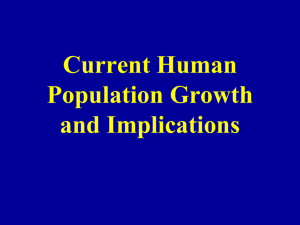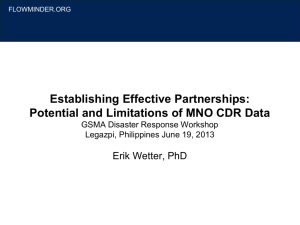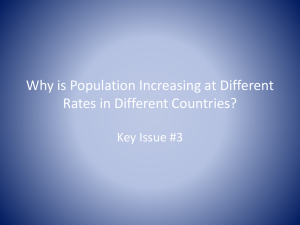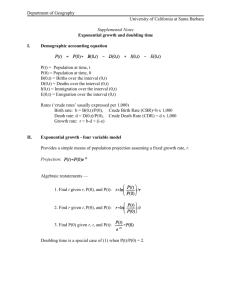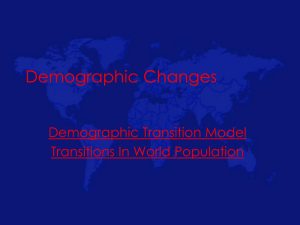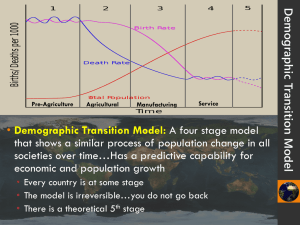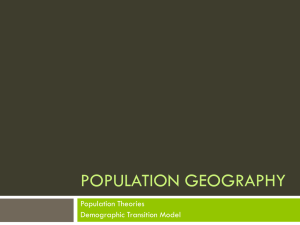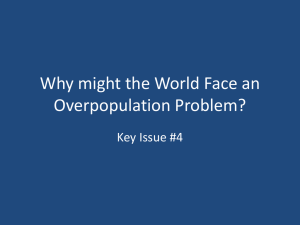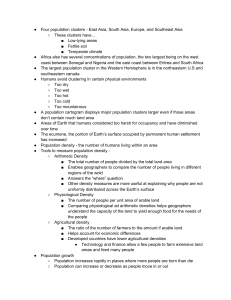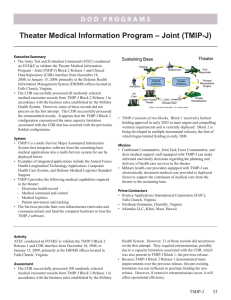Demographic & Epidemiologic Transition Lecture Notes
advertisement
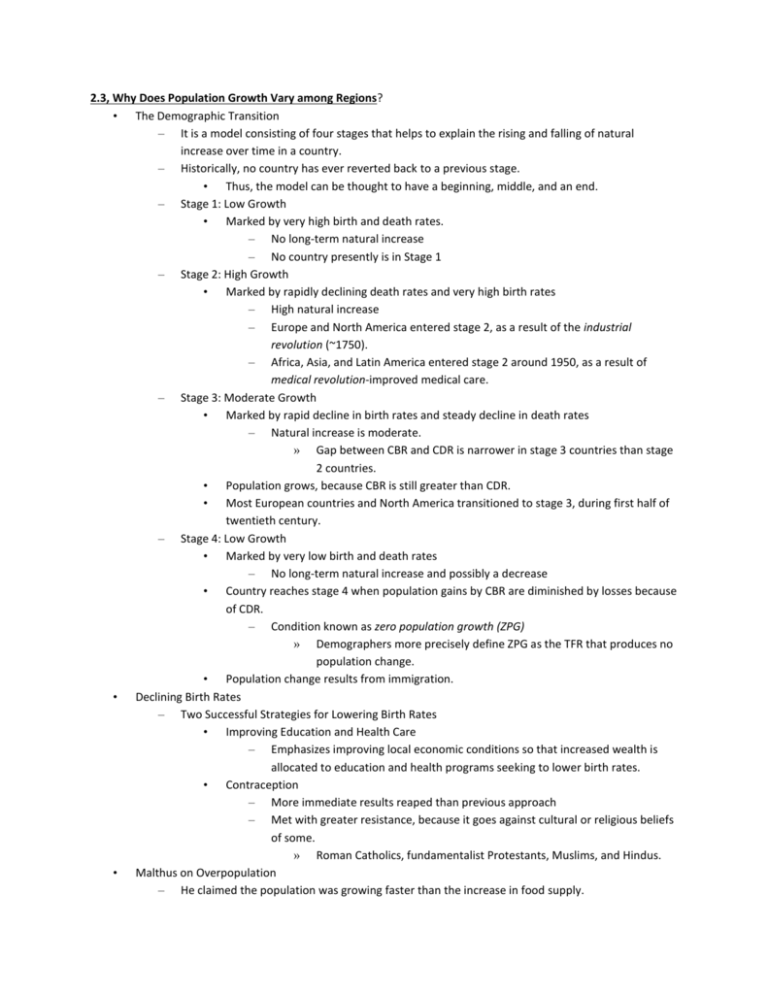
2.3, Why Does Population Growth Vary among Regions? • The Demographic Transition – It is a model consisting of four stages that helps to explain the rising and falling of natural increase over time in a country. – Historically, no country has ever reverted back to a previous stage. • Thus, the model can be thought to have a beginning, middle, and an end. – Stage 1: Low Growth • Marked by very high birth and death rates. – No long-term natural increase – No country presently is in Stage 1 – Stage 2: High Growth • Marked by rapidly declining death rates and very high birth rates – High natural increase – Europe and North America entered stage 2, as a result of the industrial revolution (~1750). – Africa, Asia, and Latin America entered stage 2 around 1950, as a result of medical revolution-improved medical care. – Stage 3: Moderate Growth • Marked by rapid decline in birth rates and steady decline in death rates – Natural increase is moderate. » Gap between CBR and CDR is narrower in stage 3 countries than stage 2 countries. • Population grows, because CBR is still greater than CDR. • Most European countries and North America transitioned to stage 3, during first half of twentieth century. – Stage 4: Low Growth • Marked by very low birth and death rates – No long-term natural increase and possibly a decrease • Country reaches stage 4 when population gains by CBR are diminished by losses because of CDR. – Condition known as zero population growth (ZPG) » Demographers more precisely define ZPG as the TFR that produces no population change. • Population change results from immigration. • Declining Birth Rates – Two Successful Strategies for Lowering Birth Rates • Improving Education and Health Care – Emphasizes improving local economic conditions so that increased wealth is allocated to education and health programs seeking to lower birth rates. • Contraception – More immediate results reaped than previous approach – Met with greater resistance, because it goes against cultural or religious beliefs of some. » Roman Catholics, fundamentalist Protestants, Muslims, and Hindus. • Malthus on Overpopulation – He claimed the population was growing faster than the increase in food supply. – Malthus’s Critics • Many geographers consider his beliefs too pessimistic. – Malthus’s theory based on idea that world’s supply of resources is fixed rather than expanding. • Many disagree that population increase is not a problem. – Larger populations could stimulate economic growth, and therefore, production of more food. – Theory and Reality • Food production has increased over last 50 years faster than Malthus predicted. • His model predicted world population to quadruple over the course of 50 years. – Not even in India has population growth outpaced food production. • Population Futures – Demographic Transition Possible Stage 5: Decline • Characterized by… – Very low CBR – Increasing CDR » More elderly people than young persons – Negative NIR – Over time, few young women in child-bearing years » Contributing to ever falling CBR • Several European countries already have negative NIR. – Russia is most notable hosting a negative NIR for 50 years. 2.4, Why Do Some Regions Face Health Threats? • Epidemiologic Transition – Medical researches have identified an epidemiologic transition that focuses on distinct health threats in each stage of the demographic transition. – Stage 1: Pestilence and Famine (High CDR) • Principal cause of death: infectious and parasitic diseases – Ex. black plague (bubonic plague) – Why Do Some Regions Face Health Threats? – Stage 2: Receding Pandemic (Rapidly Declining CDR) • Pandemic is a disease that occurs over a wide geographic area and affects a very high proportion of the population. • Factors that reduced spread of disease, during the industrial revolution – Improved sanitation – Improved nutrition – Improved medicine • Famous cholera pandemic in London in mid nineteenth century. – Stage 3: Degenerative Diseases (Moderately Declining CDR) • Characterized by… – Decrease in deaths from infectious diseases. – Increase in chronic disorders associated with aging. » Cardiovascular diseases » Cancer – Stage 4: Delayed Degenerative Diseases (Low but Increasing CDR) • Characterized by… – • • Deaths caused by cardiovascular diseases and cancer delayed because of modern medicine treatments. Infectious Diseases – Reasons for Possible Stage 5 • Evolution – Infectious disease microbes evolve and establish a resistance to drugs and insecticides. – Antibiotics and genetic engineering contributes to the emergence of new strains of viruses and bacteria. • Poverty – Infectious diseases are more prevalent in poor areas because of presence of unsanitary conditions and inability to afford drugs needed for treatment. • Increased Connections – Advancements in modes of transportation, especially air travel, makes it easier for an individual infected in one country to be in another country before exhibiting symptoms. Health Care – Health conditions vary around the world, primarily, because countries possess different resources to care for people who are sick. • Expenditures on Health Care – More than 15 percent of total government expenditures in Europe and North America. – Less than 5 percent in sub-Saharan Africa and South Asia. – Health Care Systems • Developed Countries – Public service available at little or no cost. – Government pays more than 70 percent of health-care costs in most European countries, and private individuals pay about 30 percent of the expense. • Developing Countries – Private individuals must pay more than half of the cost of health care. » U.S. is an exception to these generalizations, because private individuals are required to pay about 55 percent of health care costs making it more closely resemble a developing country, in regards to health care.
